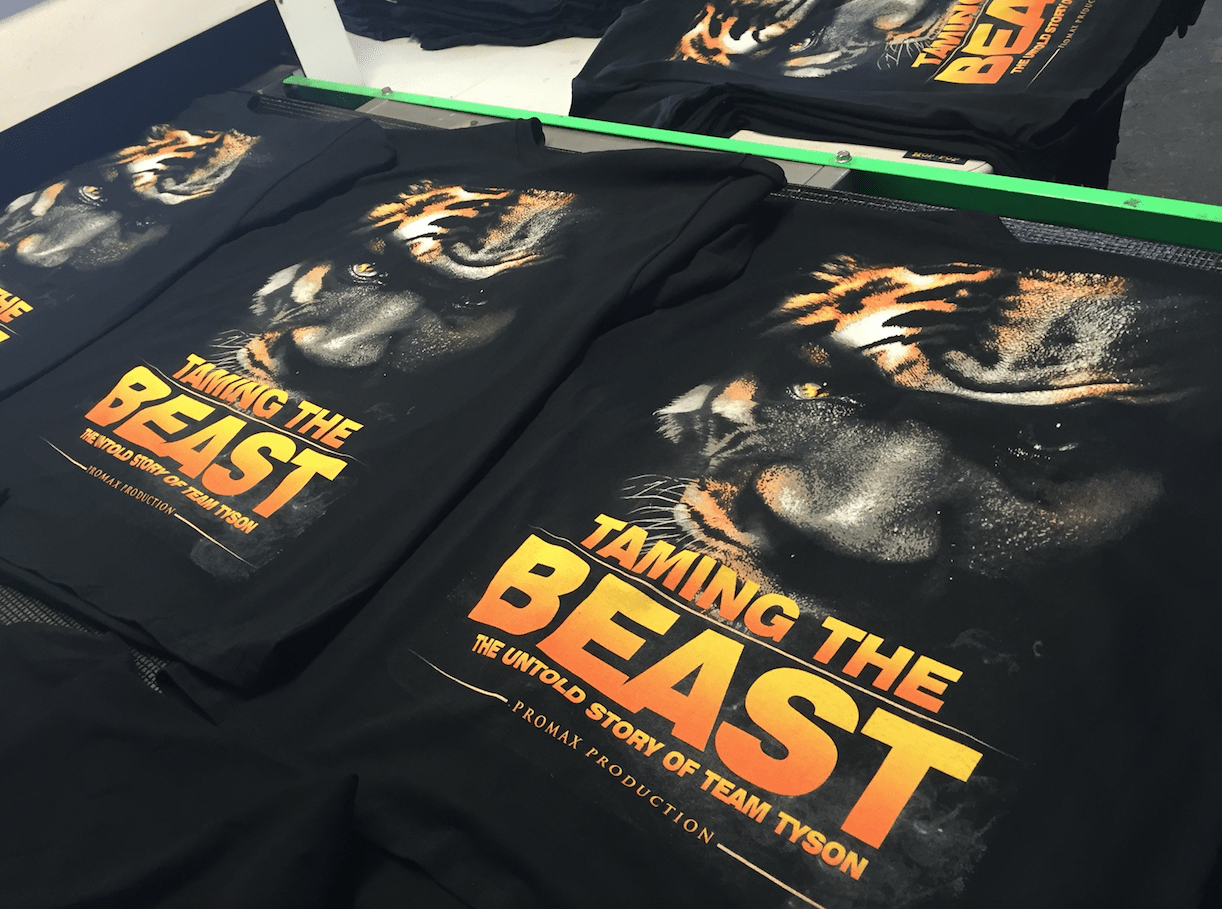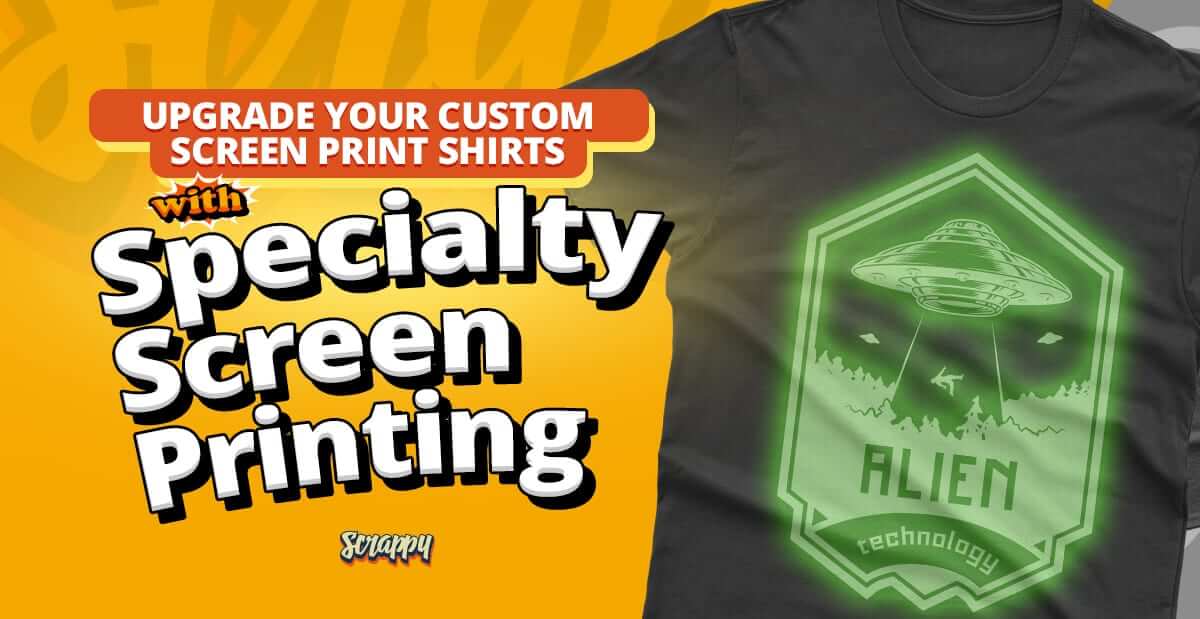Screen Printing Uncovered: Every Little Thing You Need to Understand About T-Shirt and Garment Printing Strategies
Screen printing is a fascinating method that combines art with strategy, supplying countless opportunities for imagination. Prepared to explore the important elements that make display printing an art form?
The Basics of Display Printing: Just How It Functions
When you plunge right into display printing, you'll find it's both an art and a science. At its core, screen printing includes creating a pattern, or display, that enables ink to pass via only in specific locations.
Setting the screen over the textile, then utilize a squeegee to press ink via the screen onto the garment. Each step is necessary, and mastering them will raise your display printing abilities, changing simple garments right into one-of-a-kind, expressive pieces.
Kinds of Display Printing Techniques
When you grasp the basics of display printing, it's time to check out the various strategies that can boost your styles. One preferred approach is conventional screen printing, where ink is pushed with a stenciled screen. This method is great for bold, dynamic colors. Then there's water-based ink printing, which uses a softer feeling and is environmentally friendly, however it needs a various strategy to healing.
If you're going for great details, think about discharge printing. This technique removes color from the material, leaving a soft, vintage look. An additional choice is plastisol printing, understood for its toughness and brilliant colors, making it a favorite for several brand names. Experiment with halftone printing to create slope effects and intricate layouts. Each method has its unique beauty, so don't hesitate to attempt them out to locate what suits your design best!
Necessary Equipment for Display Printing
To achieve magnificent lead to display printing, having the best tools is fundamental. You'll need a strong display printing framework, which holds the mesh that moves your design onto the garment. Next off, spend in high-quality mops; these are essential for applying ink uniformly throughout the screen. You'll likewise call for a good exposure system to develop your screens, in addition to a washout booth for cleansing them after use. A reliable warm resource, like a conveyor clothes dryer or warmth press, is vital for treating your prints to guarantee durability. Do not neglect a proper work space, outfitted with tables and storage for your supplies. Lastly, protective equipment, such as handwear covers and masks, will certainly maintain you secure from chemicals and inks. With the right tools, you'll be well on your method to creating professional-quality prints.
Picking the Right Inks and Products
When selecting inks and products for screen printing, you need to take into account the type of ink that functions ideal for your task. Consider textile compatibility to guarantee your layouts look wonderful and last long. Explore eco-friendly ink alternatives to make your printing procedure much more sustainable.
Kinds Of Display Inks
Selecting the ideal display ink is necessary for attaining dynamic, durable prints that fulfill your task's requirements. There are numerous kinds of screen inks to examine. Plastisol ink is preferred for its flexibility and ease of usage, offering excellent shade opacity on dark fabrics. Water-based ink, on the various other hand, uses a softer feel and is green, making it excellent for those seeking to minimize their ecological impact. Release inks remove color from the fabric, leading to a soft, classic appearance but need specific handling. Lastly, specialty inks, such as metallic or glow-in-the-dark, can add one-of-a-kind impacts to your designs. Review your task demands and choose the ink that lines up finest with your wanted outcome.

Fabric Compatibility Considerations
Comprehending material compatibility is important for attaining premium screen prints, particularly given that various materials react uniquely to numerous inks. Constantly examine your inks on sample fabric to ensure they stick correctly and preserve color stability. Additionally, maintain in mind that textile weight and appearance can influence the last end result, so picking the right ink and material combination is important for your project's success.
Eco-Friendly Ink Options
Eco-friendly inks are coming to be a preferred selection for display printers who desire to minimize their environmental influence while maintaining top quality. When selecting inks, think about water-based inks, which are less harmful and simpler to clean up compared to standard solvents.
Furthermore, try to find inks made from eco-friendly sources, such as soy or vegetable-based alternatives. By picking the appropriate inks and products, you'll not just produce magnificent designs but also add to a more sustainable printing process. Make the button, and your prints will reflect your commitment to the setting!
Preparing Your Layout for Display Printing

Submit Style Requirements
To assure your design looks sharp and vivid on textile, you'll need to pay attention to submit format demands for display printing. Start with vector data like AI or EPS, as they can be scaled without shedding quality. If you utilize raster photos, choose for high-resolution data, such as TIFF or PNG, ideally at 300 DPI. Stay clear of utilizing JPEGs, as they can lose clearness when resized. Additionally, see to it your layout has a transparent background to avoid unwanted white edges on your prints. Lastly, maintain color settings in mind; CMYK is common for screen printing, so transform your RGB develops accordingly. By adhering to these standards, you'll establish your art work up for an effective print.
Shade Splitting Up Methods
Shade splitting up is an essential action in preparing your layout for screen printing, and grasping it can significantly improve your print top quality. You'll require to break your layout into specific colors, as each color requires a separate display during printing. Begin by recognizing all the shades in your style and develop layers for each one. You can utilize software program like Adobe Photoshop or Illustrator to isolate and different colors properly. Be particular to save each layer as a different file, generally in a format like TIFF or PSD. This accuracy not just ensures accurate color depiction yet additionally streamlines the printing procedure. By focusing on color splitting up, you'll achieve dynamic and professional cause your screen-printed garments.
Resolution and Size
Attaining the most effective outcomes in display printing starts with ensuring your style has the ideal resolution and size. Ideally, your artwork should be at least 300 DPI (dots per inch) for sharp, clear prints. Your final item could look pixelated and unprofessional. if you make use of reduced resolution.
When it pertains to dimension, consider the dimensions of your print area. Design your art work to match the final print size, preferably creating it in the real measurements you'll be printing. In this manner, you'll avoid any unanticipated scaling issues.
Constantly examine your design in both vector and raster styles. Vector graphics can be scaled without shedding quality, making them excellent for display printing. Preparing correctly will ensure your layout looks outstanding on every garment!
Step-by-Step Display Printing Process
Display printing is a vibrant process that permits you to create lively designs on different surface areas. To get started, you'll require a screen, emulsion, and your chosen ink. Prepare your display by cleaning it thoroughly. Next, use the emulsion equally and let it completely dry in a dark location. Once dry, reveal your screen to light with your style positioned on it, which will set the emulsion where the light hits, developing a stencil - screen printing kit.
Put ink onto the screen and use a squeegee to press the ink via the stencil onto the fabric. Raise the display very Our site carefully and allow the print dry. You have actually efficiently display published your design.
Tips for Successful Display Printing Projects
While you're diving right into your screen printing tasks, keep in mind that prep work is crucial to success. Begin by collecting all your materials-- inks, squeegees, garments, and screens. A tidy workspace helps stop undesirable errors, so clean up before you begin.
Next, verify your art work is high-resolution and properly sized for your garment. Examine your display for appropriate direct exposure and tidy it completely to prevent smudges. When blending your inks, adhere to the producer's guidelines to attain the ideal consistency.
Throughout printing, apply also stress with your squeegee for constant outcomes. Don't hurry; take your time to confirm each print meets your criteria. After printing, let your garments dry entirely before handling or packaging them.
Last but not least, constantly maintain a sample of your benefit future reference. In this manner, you can find out this here examine your progression and improve your methods over time. Delighted printing!

Regularly Asked Questions
For how long Does It Require To Establish up a Display Printing Job?
Setting up a screen printing task normally takes around thirty minutes to an hour. You'll prepare the displays, mix inks, and change the press. The time varies based upon complexity and experience, so remain arranged!
Can I Publish on Various Textile Keys In Utilizing the Exact Same Strategy?
Yes, you can print on different textile types making use of the exact same technique, yet you'll need to adjust your inks and setups. Some materials take in ink differently, so experimenting warranties the most effective outcomes for each and every material.
What Are Usual Errors to Prevent in Screen Printing?
When screen printing, stay clear of usual blunders like using the wrong ink, disregarding appropriate direct exposure times, or missing pre-press checks. Constantly test your arrangement and preserve clean screens to assure top quality outcomes each time.
How Can I Properly Tidy and Maintain My Display Printing Devices?
To correctly clean and keep your screen printing devices, you ought to on a regular basis clean displays with proper solvents, examine mops for wear, and ensure all tools are stored dust-free and dry. Uniformity boosts and prevents costly repairs performance.
Is Display Printing Environmentally Pleasant Compared to Various Other Methods?
Screen printing can be extra eco friendly than other techniques, specifically if you use eco-conscious products and water-based inks. By choosing sustainable products and practices, you decrease waste and lessen your impact on the planet.
Display Printing Uncovered: Every Little Thing You Required to Know About T-Shirt and Garment Printing Techniques
At its core, screen printing entails developing a stencil, or display, that allows ink to pass via only in certain areas. Position the display over the textile, after that make use of a squeegee to push ink through the screen onto the garment. One prominent technique is typical display printing, where ink is pushed through a stenciled screen.When selecting inks and products for display printing, you require to take into account the kind of see this ink that functions finest for your job.